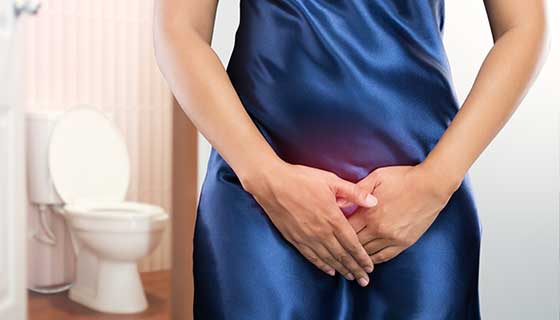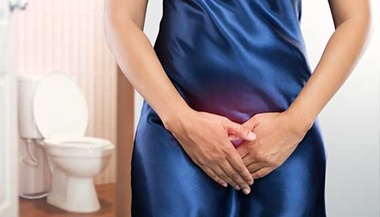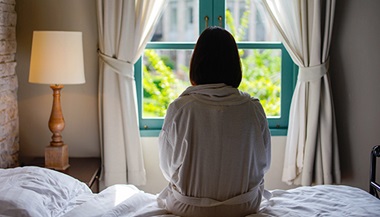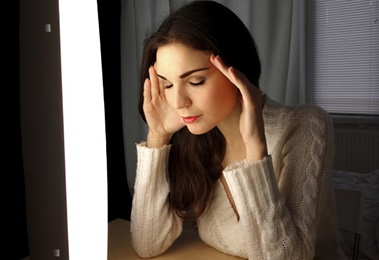Seasonal Affective Disorder
What is seasonal affective disorder?
Seasonal affective disorder (SAD) is a type of depression. It happens during certain seasons of the year, most often fall or winter. It is thought that shorter days and less daylight may set off a chemical change in the brain leading to symptoms of depression. Light therapy and antidepressants can help treat SAD.
What You Need to Know
- Depression is different from feeling sad or unhappy. It is not a sign of personal weakness or a condition that can be willed or wished away.
- Get help. If you think you may be depressed, see a healthcare provider as soon as possible.
- Women are affected more often than men.
- Without treatment, depression can last weeks, months or years, but most people respond well to medication, therapy or a combination of the two.
- Most people with clinical depression who seek treatment see improvement, usually within weeks.
Who is at risk for SAD?
SAD often starts during adulthood. The risk of SAD increases with age. It’s rare in people younger than age 20. Women are affected more often than men.
What causes SAD?
Less sunlight and shorter days are thought to be linked to a chemical change in the brain. They may be part of the cause of SAD.
Melatonin, a sleep-related hormone, also has been linked to SAD. The body naturally makes more melatonin when it’s dark. So when the days are shorter and darker, more melatonin is made.
What are the symptoms of SAD?
There are 2 types of SAD:
-
Fall-onset. This type is also called winter depression. Symptoms of depression begin in the late fall to early winter months. They ease during the summer months.
-
Spring-onset. This type is also called summer depression. Symptoms of depression begin in late spring to early summer. This type is much less common.
These are the most common symptoms of SAD:
-
Increased sleep and daytime drowsiness
-
Loss of interest and pleasure in activities formerly enjoyed
-
Social withdrawal and increased sensitivity to rejection
-
Grouchiness and anxiety
-
Feelings of guilt and hopelessness
-
Excessive tiredness (fatigue)
-
Decreased sex drive
-
Decreased ability to focus
-
Trouble thinking clearly
-
Increased appetite, especially for sweets and carbohydrates
-
Weight gain
-
Physical problems, such as headaches
Symptoms tend to come back and then improve at about the same times every year.
The symptoms of SAD may seem like other mental health conditions. Always see a healthcare provider for a diagnosis.
How is SAD diagnosed?
Depression often happens with other conditions, such as heart disease or cancer. It may also happen with other mood disorders, such as substance abuse or anxiety. For these reasons, early diagnosis and treatment is key to recovery.
A diagnosis of SAD may be made after a careful mental health exam and health history. These are done by a psychiatrist or other mental health provider.
How is SAD treated?
The treatments for winter depression and summer depression often differ. They may include any of these:
-
Exposure to sunlight. Spending time outside or near a window can help ease symptoms.
-
Light therapy. If increasing sunlight is not possible, exposure to a special light for a certain amount of time each day may help. Certain light sources are best for SAD. Check with your healthcare provider for a recommendation.
-
Psychotherapy. Cognitive-behavioral or interpersonal therapy helps change the distorted views you may have of yourself and the environment around you. It can help you improve interpersonal relationship skills. And it can help you identify things that cause you stress and learn how to manage them.
-
Antidepressants. These prescription medicines can help correct the chemical imbalance that may lead to SAD.
There are also things you can do for yourself to help ease symptoms:
-
Get help. If you think you may be depressed, see a healthcare provider as soon as possible.
-
Set realistic goals in light of the depression. Don’t take on too much. Break large tasks into small ones, set priorities, and do what you can as you can.
-
Try to be with other people and confide in someone. It is often better than being alone and secretive.
-
Do things that make you feel better. Going to a movie, gardening, or taking part in religious, social, or other activities may help. Doing something nice for someone else can also help you feel better.
-
Get regular exercise.
-
Expect your mood to get better slowly, not right away. Feeling better takes time.
-
Eat healthy, well-balanced meals.
-
Stay away from alcohol and illegal drugs. These can make depression worse.
-
Delay big decisions until the depression has lifted. Don't make a big change right away, such as getting a new job or getting married or divorced. Talk it over first with others who know you well. They will likely have a more objective view of your situation.
-
People don't often snap out of a depression. But they can feel a little better day by day.
-
Try to be patient and focus on the positives. This may help replace the negative thinking that is part of the depression. The negative thoughts will go away as your depression responds to treatment.
-
Let your family and friends help you.
Key points about SAD
-
SAD is a type of depression that happens during a certain season of the year, most often fall and winter.
-
There is no clear cause of SAD. But less sunlight and shorter days may be part of the cause. Melatonin, a sleep-related hormone, also may be linked to SAD.
-
Symptoms can include increased sleep and daytime drowsiness, social withdrawal, grouchiness, and decreased sex drive.
-
SAD may be diagnosed after a mental health exam and health history. These are done by a psychiatrist or other mental health professional.
-
Depression is most often treated with light therapy, psychotherapy, and in some cases antidepressants.






